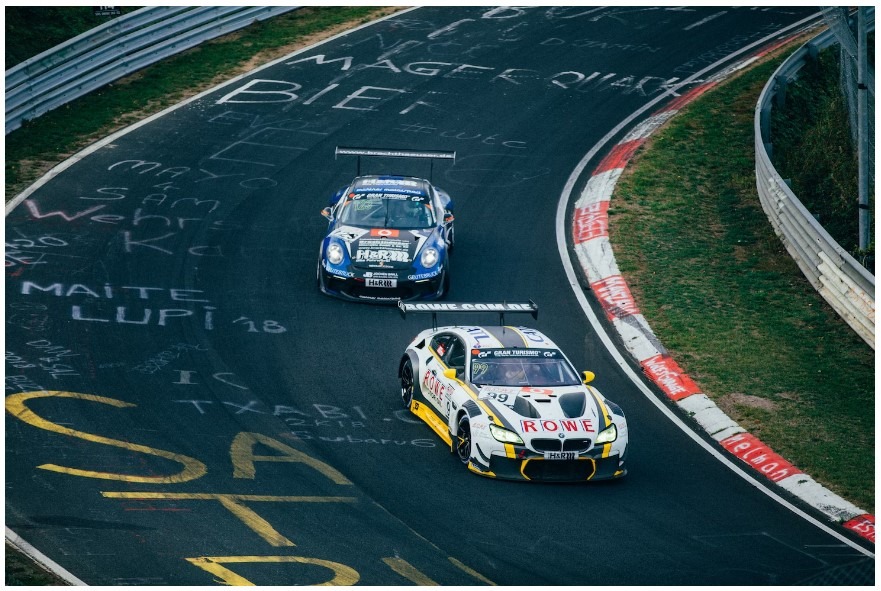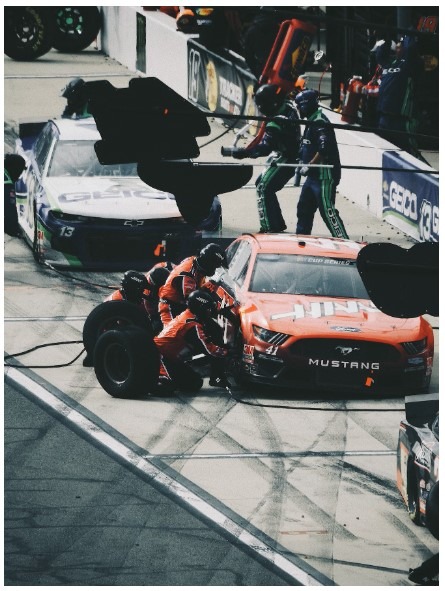From the first automobile race on June 13, 1895, from Paris to Bordeaux, France, auto racing has evolved in many ways and established itself as part of a multibillion-dollar industry. Today, people devote much interest in the sport, allowing it to gain massive international acclamation, coverage, and revenue.
It’s little wonder as nothing can match the excitement, atmosphere, and experience the competition brings for all the spectators around the globe. What’s even great is that people across different fields, from the drivers, organizers, officials, media personnel, and technicians to the most renowned car designers, largest tire manufacturers, and race track engineers, all team up to steer the industry.
In this article, let’s discover how big the car racing industry is, proving why it’s a genuine global phenomenon.
Motorsports Industry Worth
The auto car racing industry is a segment of a bigger industry called Motorsports, which comprises global competitive events that use highly customized and optimized vehicles for racing. It involves various types of motor vehicles, such as cars, trucks, go-karts, bikes, snowmobiles, boats, etc.
Truth to be told, actual figures on professional competitive auto racing are difficult to determine due to confidential, individually negotiated contracts between stakeholders. What’s certain is that it’s a really huge business, considering all the different sources of revenue.
In 2021, the Motorsports industry’s global market was estimated to be at around US$4.8 billion in 2021, a US$1.5 billion increase from the US$3.3 billion in 2015. Projections are positive for the entire industry as its worth is expected to be at US$7.8 billion in 2026.
Motorsports Industry Revenue Channels
Revenues are accrued from various channels, including gate receipts, advertising, sponsorship, hosting fees, merchandising, and broadcasting. Among these, broadcasting remains the main driver of its global market. With the continued rise in popularity of different car racing events worldwide, broadcasters are prompted to invest massive amounts of money to get broadcasting rights. Thus, serving as a crucial source of income for all the people and organizations behind the industry.
A considerable chunk of revenue is generated by ticket sales. For instance, attendance figures for Formula 1 surpassed the 4-million mark in 2019, recording a 1.75% increase from the prior year. The British Grand Prix was the most attended that year with an over 350,000 attendance record, followed by Mexico with 345,694 and Australia with 324,100. Meanwhile, the USA and Singapore attracted 268,000 spectators each.
Following the two channels, other revenue top sources include participation fees, and sponsorship and merchandising, which not only generates incomes but aids in promotion and marketing the events and entices competitors, drivers, and brands.
Motorsports Industry Popularity
Motorsports is among the most popular spectators in the world. Formula One, NASCAR, Moto GP, Indy Car, and WRC are some of the most loved motorsport racing series that gives thrill and excitement to its viewers.
Formula 1 is the highest class, most storied international single-seater auto racing series. It has come a long way since its beginning in 1950 and has now been dubbed as pinnacle of motor racing, with 24 million fans watching every race that takes place on public roads and purpose-built circuits around the globe.
Formula 1 vehicles are also the most advanced vehicles on the planet. Each year, teams had to design and create a brand new car within the series’ requirements and rules to obtain the best possible downforce. Thus, making it also the globe’s most expensive form of racing. In 2021, the budget cap for each team was at US$145 million, not including other expenses like driver salaries.
Following Formula One is NASCAR (National Association for Stock Car Auto Racing”), the world’s second most popular motorsport series and the most-watched in the United States.
Founded in the late 1940s in Daytona Beach, Florida, it soon became a wide hit, garnered its own league of fans, and is now worth hundreds of million of dollars. Fans look forward to three NASCAR national series, namely the Xfinity Series, the Gander RV & Outdoors Truck Series, and the NASCAR Cup Series.
In general, NASCAR is deemed to be safer than Formula One. Rather than focusing on technological innovations, NASCAR vehicles tend to be more equal or uniform in engine and ability. Thus, it’s the driver’s skill and talent that preside over the car, bringing in a different sense of competition. In 2019, NASCAR’s average audience was at 9.17 million.
Another massive popular motorsport racing series is IndyCar, deemed to be the US version of Formula One. It’s a prestigious, open-wheel racing league, where races are held both on round tracks or speedways and road courses, which sets it apart from F1.
Indycar vehicles have a single-seat design, open-cockpit, and are devised to attain the maximum speed. In general, it’s one of the toughest and most competitive motorsport racing competitions in the world, giving fans some of the most thrilling wheel-to-wheel action. IndyCar has an average of 1.8 million viewers per race.
Cars aren’t the only vehicles that appeal to fans as motorcycle racing has also become a fad as well. MotoGP is the world’s premier motorbike racing league held on on-road tracks facilitated by the Fédération Internationale de Motocyclisme (FIM). Races in MotoGP are unpredictable, with riders displaying their best strategies on the tracks, bringing in unparalleled excitement to its annual 400 million TV viewers.
Founded in 1973, FIA World Rally Championship (WRC) is another renowned motorsport racing series but quite different from the first league stated on this list. Here, pits drivers steer highly-modified, hybrid-powered production-based cars at a speed of around 130 miles per hour over some of the most unforgiving and toughest terrains on the planet.
Throughout the year, WRC conducts rallies in 13 countries in four continents, where participants battle against the clock and elements. They take sharp turns and crazy jumps on various racecourses, including boulder-strewn landspapes, rugged mountain passes, hot deserts to snow-packed forests. Arguably, it’s one of the harshest motorsport racing series in the world where man and machine have to endure more compared to other leagues.
Takeaway
Indeed, the entire Motorsports industry is massive in terms of scope, worth, revenue, and popularity, ceaseless in providing the best racing entertainment for people across the globe. What we’ll all love as we’re not seeing any finish line as the industry is on the road to stay and to continue to expand in the succeeding generations.



